#francesco montelatici
Text

Armida (c.1550, oil on canvas) | Francesco Montelatici known as Cecco Bravo
47 notes
·
View notes
Text
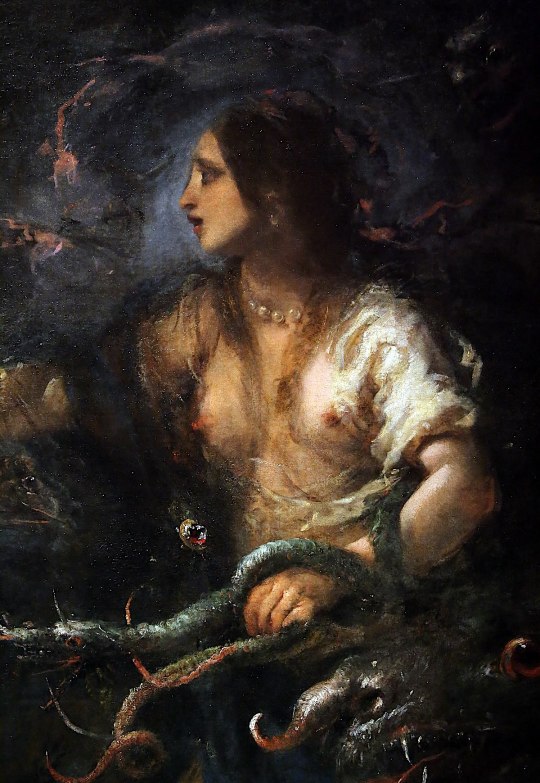
Armida ~ c.1650 ~ Francesco Montelatici known as Cecco Bravo (Florence artist, 1607- 1661)
38 notes
·
View notes
Text
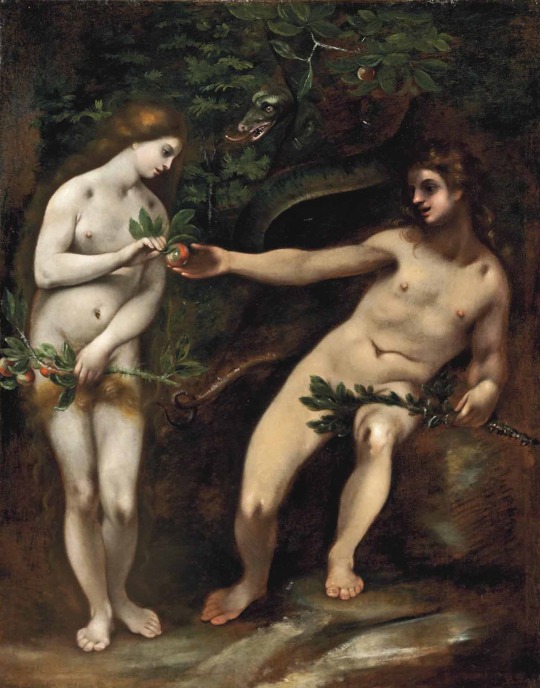
Francesco Montelatici, called Cecco Bravo - Adam and Eve
4 notes
·
View notes
Text
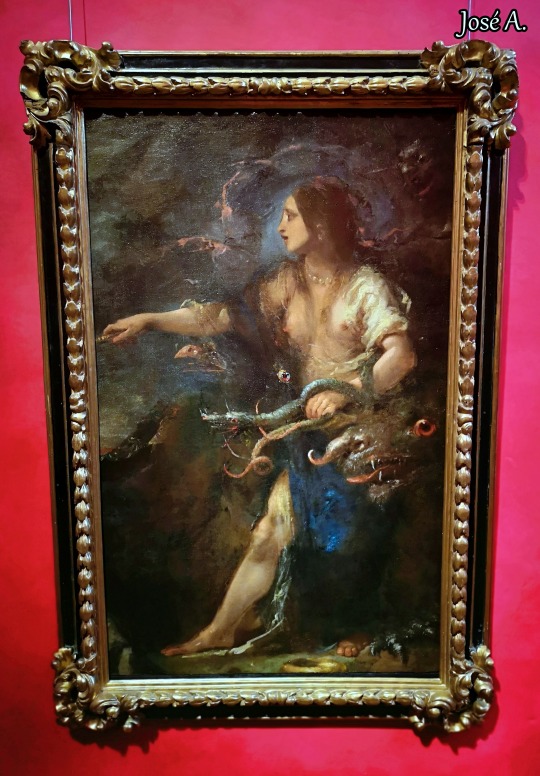
Armida
Francesco Montelatici, conocido como Cecco Bravo (Florencia 1607-1661)
Hacia 1650
Pintura al óleo sobre lienzo
127x80 cm
Inventario 1890 n. 10723
Presentada al público por primera vez con la atribución a Cecco Bravo en 1986, con motivo de la gran exposición sobre el siglo XVII florentino, y comentada varias veces por estudios especializados, la Armida pasó a formar parte de las colecciones florentinas en 2017. La protagonista es una de las figuras más intensas y conmovedoras de Gerusalemme Liberata de Torquato Tasso; la princesa musulmana, bella y muy hábil en el arte de la magia, es enviada por su tío al ejército cristiano con la tarea de distraer a las milicias con trucos y seducciones. Locamente enamorada del cruzado Rinaldo, Armida lo secuestra para llevarlo a las Islas Afortunadas, donde mágicamente crea un palacio y un jardín encantados para retenerlo. Carlo y Ubaldo, los compañeros de Rinaldo, logran penetrar en ese reino de cuento de hadas y encontrar al joven, convenciéndolo de regresar a su ejército. Ahora abandonada, Armida cae presa de la desesperación y la furia. Ella sube a la cima de la montaña, convoca a los espíritus infernales y se va, decidida a unirse a las fuerzas egipcias para vengarse. Esta es la imagen elegida en el cuadro de Cecco Bravo, donde la marcada sensualidad de la joven se ve acentuada por las transparencias de su vestido y el juego de perlas y cintas que lo adornan. El perfil regular del rostro, como el de un antiguo camafeo, está iluminado por el puchero de los labios carnosos, la mirada se pierde en el horizonte mientras el brazo se levanta para blandir el cetro mágico. Una impresionante variedad animal lo envuelve a su alrededor, correspondiente a los dragones, serpientes y demonios que saltaban de los círculos infernales descritos por Tasso. Nunca realmente aterradores, más bien extraños y serviles a esa vena satírica y burlesca que recorre la pintura florentina en los años centrales del siglo XVII, constituyendo un rasgo peculiar, estos monstruos también parecen inspirados en la inagotable colección de inventos deducidos de antiguos grotescos, y por las variantes que habían ofrecido a toda la generación manierista y más allá, hasta las deslumbrantes hechicerías de Salvator Rosa. La escena no está completa, ya que en el lado izquierdo el lienzo está resecado y falta una porción, correspondiente quizás a un trozo de paisaje, en el que se incluían otras apariciones fantásticas. Por tanto, el cuadro debía tener un formato mayor que el actual.
La datación de los años cincuenta, propuesta por los estudiosos, es inducida por la crítica desde un punto de vista estilístico que concuerda con el de la producción contemporánea de Cecco. Después de su primera fase de formación realizada en los talleres de Rosselli y Bilivert, el pintor busca un camino original también a través de viajes de estudios al norte, reflexiones sobre la cultura veneciana y la adhesión a las instancias más libres de la pintura contemporánea de Francesco Furini. Investigación que titubea en su característica pintura efusiva, construida sobre pinceladas de color descascarado, sobre contrastes entre transparencias y trazos de materia más sustanciosa, entre resplandores y efectos de contraluz. Con el cambio de siglo, Montelatici abandonó definitivamente la vena naturalista que caracterizó su producción hasta los años 40, y cedió a composiciones donde el espacio era menos tridimensional, la escena principal pasaba a primer plano y los fondos se perdían. en paisajes lejanos y borrosos, velados en tonos grises
Compra por los Amigos de la Galería Uffizi 2017
Información de la web de la Gallerie degli Uffizi, fotografía de mi autoría.
0 notes
Text

Armida (c.1650). Oil on canvas by Francesco Montelatici known as Cecco Bravo (Florence, 1607- 1661). Francesco Bravo is known for Religious genre, figure easel painting, fresco church decoration, drawing teacher. Armida is a fictional character created by the Italian poet Torquato Tasso. Many painters and composers were inspired by Tasso's tale.
0 notes
Text

Francesco Montelatici - Armida (ca. 1650s)
The protagonist is one of the most intense and moving figures in "Jerusalem Delivered" by Torquato Tasso: a beautiful Muslim princess, extremely gifted in the art of magic, is sent by her uncle to the Christian army, with the task of distracting the soldiers with her cunning and seduction. Falling hopelessly in love with the crusader, Rinaldo, Armida abducts him to take him to the Fortunate Isles, conjuring up a palace and enchanted gardens in order to keep him there. Carlo and Ubaldo, companions of Rinaldo, are able to enter the fairytale kingdom, where they find the young man and convince him to return to his army. The abandoned Armida falls into despair and fury. She climbs to the top of the mountain, calls to her all the spirits of hell and then leaves to join the Egyptian ranks in order to get revenge.
This is the image chosen for the painting by Cecco Bravo, where the bold sensuality of the young woman is accentuated by the transparencies of her clothing and by the pearls and ribbons she wears. The regular profile of her face is like that of an antique cameo, emphasised by full lips, eyes looking off into the horizon, and the arm lifting the magical sceptre. An astonishing variety of animals surround her: dragons, serpents and demons from the circles of Hell as described by Tasso. Never truly frightening, but rather bizarre and subservient to the satirical, burlesque vein that flows through Florentine paintings from the mid-17th century, becoming a particular feature, these monsters seem inspired by the limitless range of inventions taken from ancient grotesques and the variations they offered to the whole Mannerist generation and beyond, through to the dazzling sorcery of Salvator Rosa.
The scene is not complete because the canvas has been cut down on the left side, so there is a piece missing that perhaps corresponds to a section of landscape that contained other fantastical apparitions. The painting therefore must have been wider than it is today. (source)
68 notes
·
View notes
Photo

#armida#francesco montelatici#cecco bravo#rinaldo and armida#my favorites on scribe4haxan#allegory of hell
2K notes
·
View notes
Photo

Francesco Montelatici detto Cecco Bravo (1601-1661)
Portrait of a lady, half-length, playing a trumpet
59 notes
·
View notes
Photo

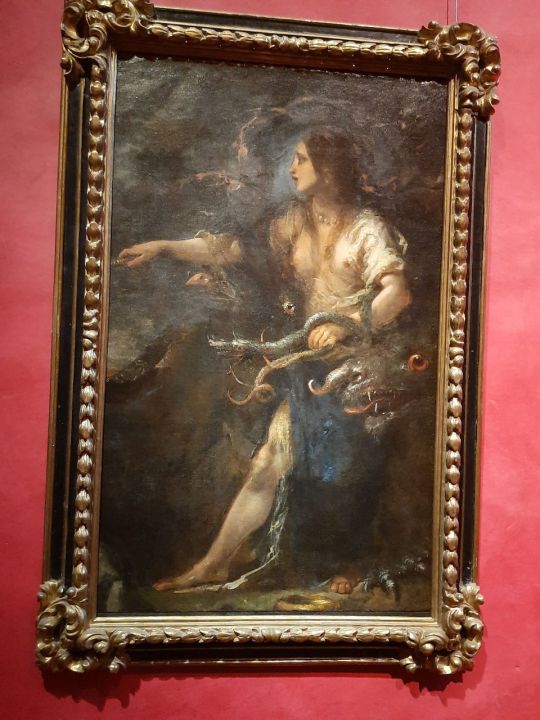
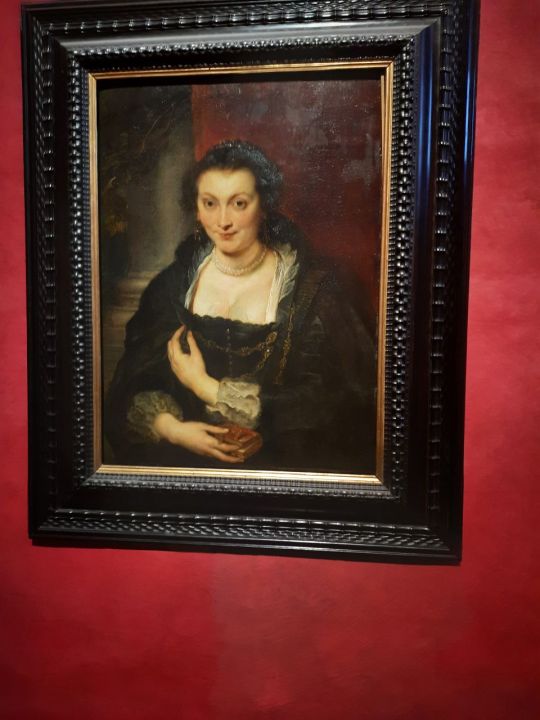
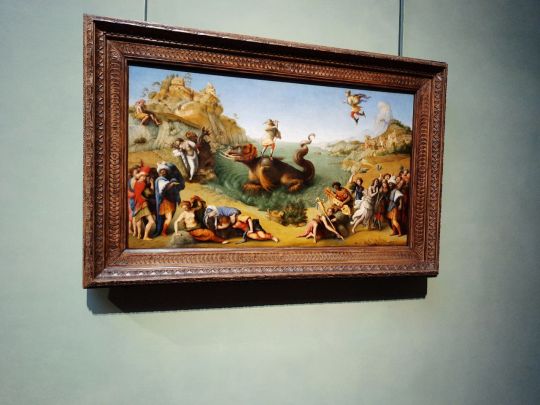
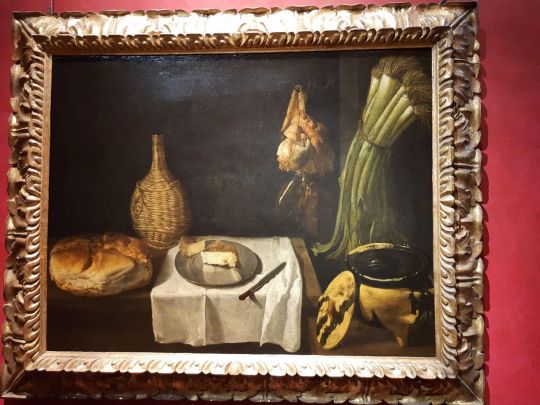
some favorites from Uffizi Galleries
Still-life with Barrel, Game, Meat and Crockery (Jacopo Chimenti ‘L’Empoli’)
Armida (Francesco Montelatici ‘Cecco Bravo’)
Isabella Brandt (Peter-Paul Rubens)
Perseus frees Andromeda (Piero di Cosimo)
Still Life (Diego Velazquez)
#uffizi galleries#still-life with barrel game meat and crockery#armida#isabella brandt#perseus frees andromeda#still life#l'empoli#cecco bravo#rubens#piero di cosimo#diego velazquez#art#favorites
11 notes
·
View notes
Photo

Armida (c.1650). Francesco Montelatici known as Cecco Bravo (Florence, 1607- 1661). Oil on canvas. The Uffizi.
Delivered by Torquato Tasso: a beautiful Muslim princess, extremely gifted in the art of magic, is sent by her uncle to the Christian army, with the task of distracting the soldiers with her cunning and seduction. Falling hopelessly in love with the crusader, Rinaldo, Armida abducts him. Carlo and Ubaldo, companions of Rinaldo, find the young man and convince him to return to his army. The abandoned Armida falls into despair and fury. She climbs to the top of the mountain, calls to her all the spirits of hell and then leaves to join the Egyptian ranks in order to get revenge. This is the image chosen for the painting by Cecco Bravo, where the bold sensuality of the young woman is accentuated by the transparencies of her clothing and by the pearls and ribbons she wears. The regular profile of her face is like that of an antique cameo, emphasised by full lips, eyes looking off into the horizon, and the arm lifting the magical sceptre. An astonishing variety of animals surround her: dragons, serpents and demons from the circles of Hell as described by Tasso.
135 notes
·
View notes
Text
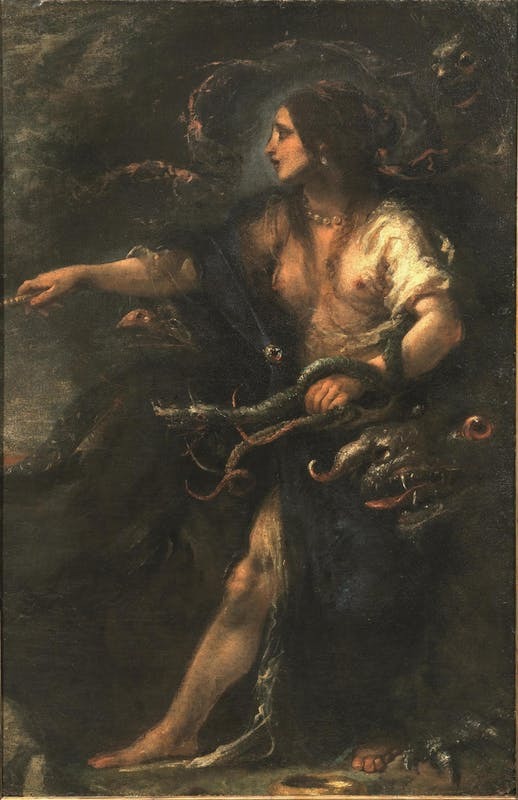
▪︎Armida.
Artist: Francesco Montelatici known as Cecco Bravo (Florence 1607- 1661)
Date: ca. 1650
#17th century#17th century art#17th century painting#art#painting#history of art#armida#Cecco Bravo#ca. 1650
111 notes
·
View notes
Text

Armida Francesco Montelatici known as Cecco Bravo (Florence 1607- 1661)
9 notes
·
View notes
Photo
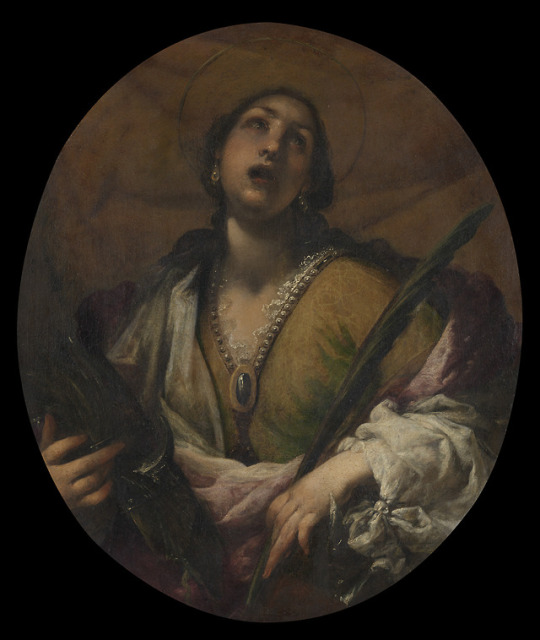
Saint Catherine by Francesco Montelatici, Museum of the Netherlands
Francesco Montelatici genaamd Cecco Bravo (1601 - 1661). De Heilige Catharina van Alexandrië, ca. 1650. Legaat Edwin vom Rath, 1941.
https://www.rijksmuseum.nl/nl/collectie/SK-A-3433
16 notes
·
View notes
Photo

Four Saints, Francesco, called Cecco Bravo Montelatici, 17th century, Harvard Art Museums: Drawings
Harvard Art Museums/Fogg Museum, Bequest of Charles A. Loeser
Size: actual: 27.4 x 20.6 cm (10 13/16 x 8 1/8 in.)
Medium: Black and red chalk on cream antique laid paper
https://www.harvardartmuseums.org/collections/object/298297
0 notes
Text
Capolavori che ci raccontano un nuovo capitolo della storia della nostra città
Capolavori che ci raccontano un nuovo capitolo della storia della nostra città
Sembra una magia quella che ha riportato a Firenze il dipinto raffigurante Armida, la celebre maga della Gerusalemme Liberata di Torquato Tasso. Opera del pittore Francesco Montelatici, conosciuto come Cecco Bravo, tra i più intriganti del Seicento fiorentino, è caratterizzata da una pennellata morbida che ne accentua il carattere misterioso e l’atmosfera torbida. Acquistata all’asta…
View On WordPress
0 notes